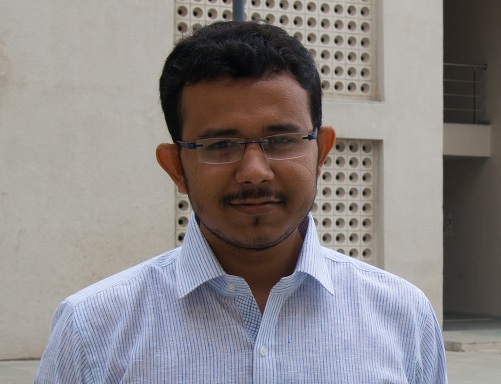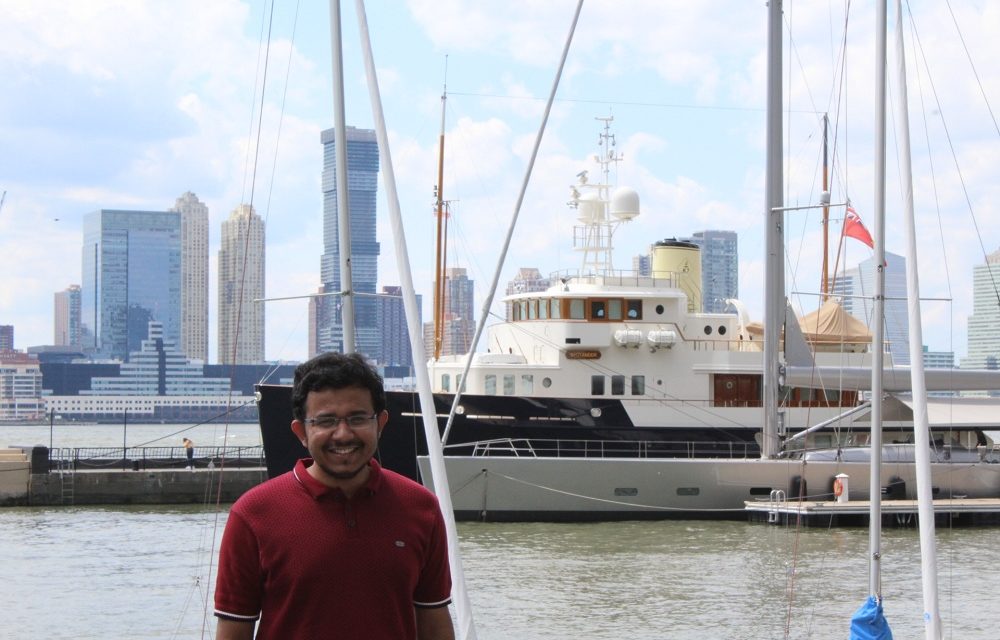I was working in the Department of Material Science with Prof. Olga Kuksenok on Hydrogel behaviour under EM waves for applications in Electronic appliances. I was working majorly on computer simulations with a group of six colleagues in the lab. The important difference I found in the was extreme punctuality in time and completion of the assigned task compared to India. Even though I was an intern, I was supposed to work for regular full-time, that is eight hours a day. The people were earnest about there working time of 8 am to 4 pm and were also keen on availing the weekly holidays for Saturday and Sunday. I was working with a diverse group consisting of Chinese, Ukrainian, English, and Indian student, hence it was an informative experience for me to discuss the educational systems in different parts of the world during our lunchtime.
Apart from this, the one striking difference between Indian town and town in America is the infrastructure. The infrastructure includes the road and footpath conditions, town planning, the quality of houses, and the availability of well-known clothing brands and food-chains in and around the town. Another noticeable thing is the number of car owners even in a small-town like Clemson. On average, over 90% of local families own at least one four-wheeler, and over 70% of native undergraduates own their vehicle, which is very different from the situation in India. Other than the cheap availability of vehicle and fuel in the USA, the structural design of supermarkets like Walmart and drive-in facility at food chains like MacDonald’s makes it very comfortable for car owners to fulfill their daily needs. With the limited local transport facility by government shuttles in the towns other than Metropolitans, a personal vehicle has been an integral part of the lifestyle of Americans. In general, people found to be more health-conscious (or one could say Calorie-conscious), which I think because of two main reasons. One is the development of the country which brought awareness, and the other is the American food which largely contains Bread, Sugar, and Meat, which forces people to keep track of calorie intake.
Unlike many Asian countries, the labour cost in America is very high, which has made people perform their daily tasks on their own instead of being dependent on some maid. People easily do tasks like Plumbing, fixing a car, or building a small component in their house, which sometimes comes from individuals interest but more often it is driven by the economic need. As mentioned earlier, regarding the availability of infrastructure in small towns, this has impacted on the necessity of youth (or general people) to rush towards metropolitan cities. This lower rate of migration helps in controlling the demand for resources in big cities and indeed helps in developing the local economy as the local talent works in the locality. This is one of the significant issues in developing countries like India and China who also suffer from there huge population and unavailability of infrastructure.
Geographically South Carolina is part of the southern states in the USA which are assumed to be conservative than the other parts of the country. The Bible Belt is an informal term for a region in the Southern United States in which socially conservative Evangelical Protestantism is a significant part of the culture and Christian church attendance across the denominations is generally higher than the nation’s average in this part of the country1. During my short experience of three months, I met with few of my local friends in the neighborhood who regularly used to volunteer for Sunday prayers and schools in the Baptist church which fits with the impression of Southerners. Given all of these, I found the people to be helping and social since we had few Potlucks and weekend trips with the neighbors. Hence, to conclude, one can see the difference between the economic condition and social school of thoughts for people in developed and developing countries.

Chinmay Sonar
Senior Undergradute
Chinmay Sonar completed his BTech-MTech Dual Degree with BTech in Mechanical Engineering and MTech in Computer Science at Indian Institute of Technology Gandhinagar (2014-2019). Next, he will be joining the University of California at Santa Barbara for PhD in Computer Science to conduct research in Theoretical Computer Science. In his leisure time, Chinmay reads books and articles on Astrophysics, Mathematics, and Econopolitical issues around the world.

